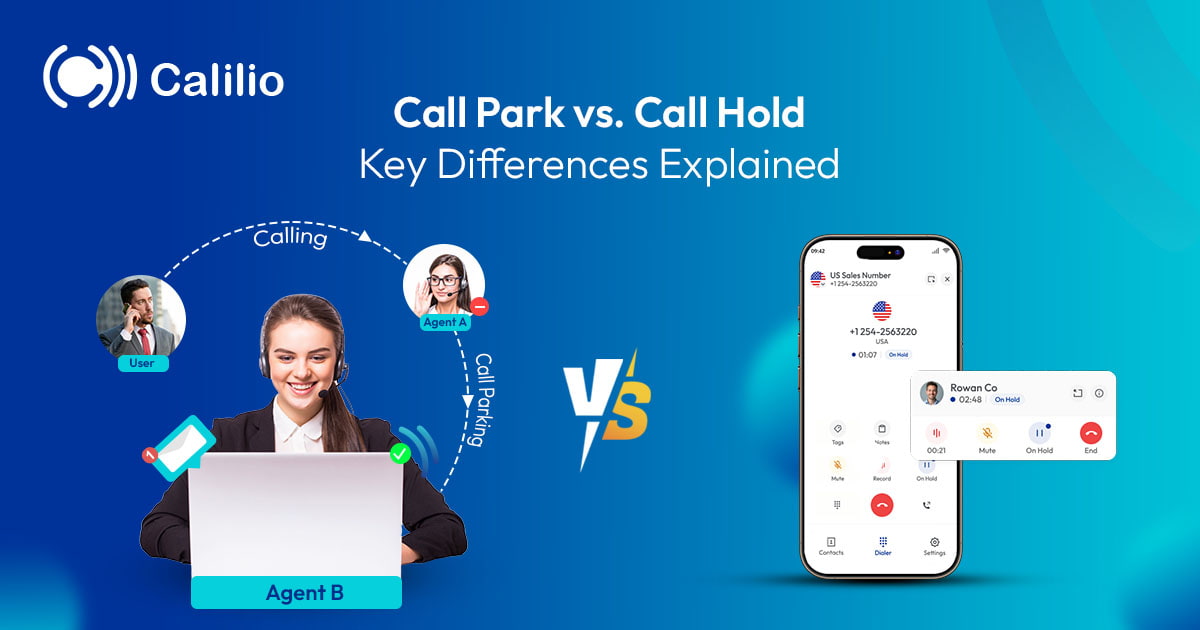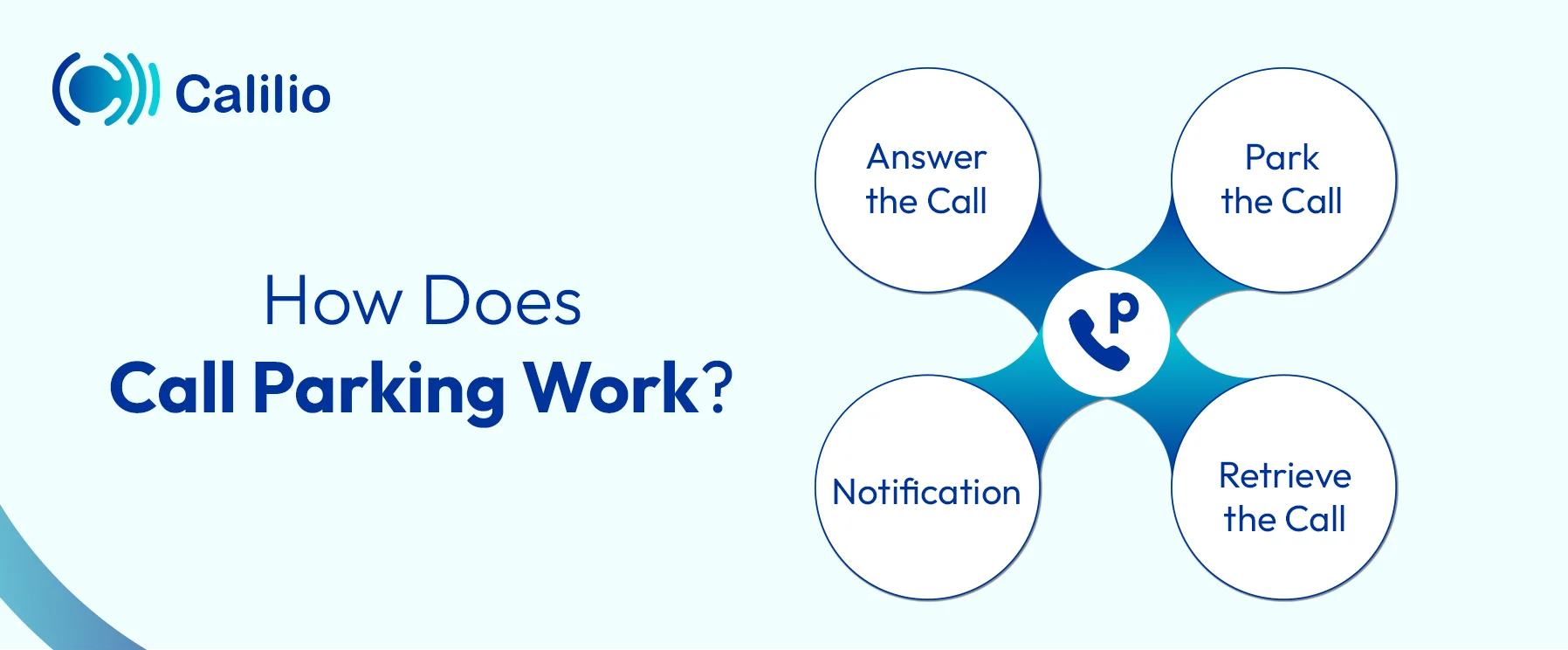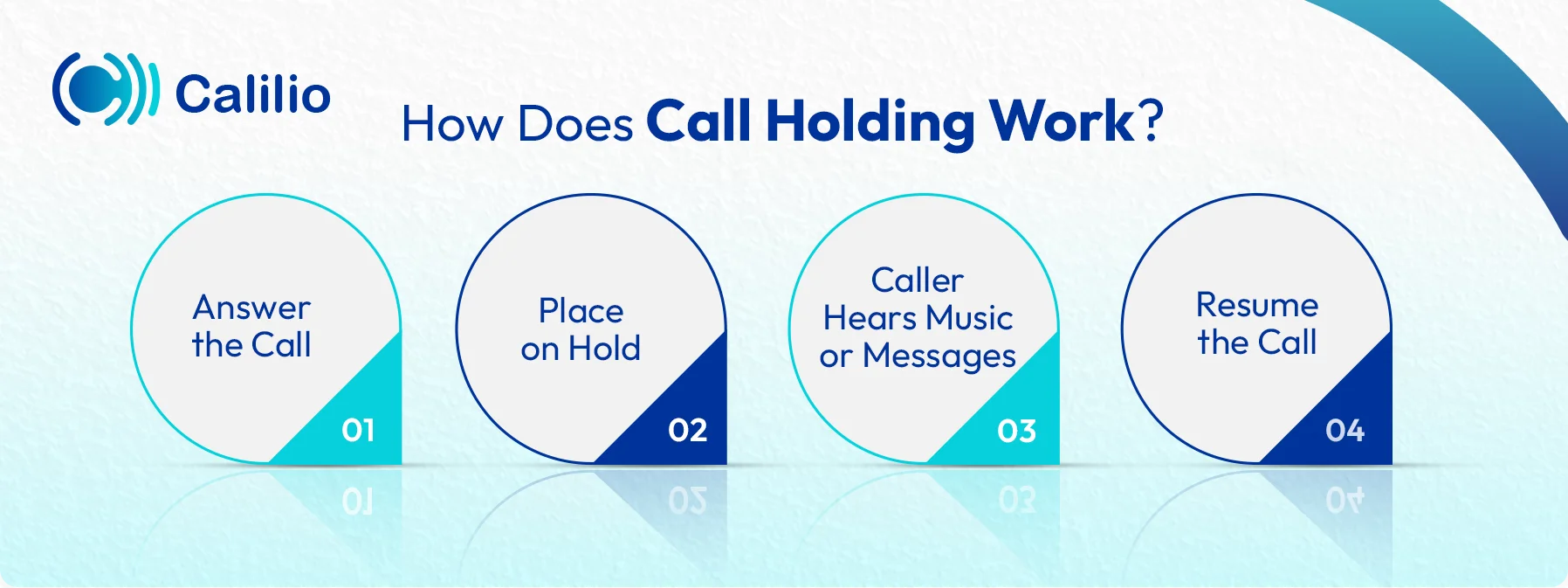Call Park vs. Call Hold: How Do They Differ?

Call parking and call hold are two essential call management features in modern phone systems, but they’re often mistaken for the same thing. While both let you pause a call without disconnecting, they serve very different purposes in real-world scenarios.
In this article, we’ll break down call park vs. hold, explain how each feature works, highlight their key differences, and help you decide which one best fits your team’s workflow.
Key Highlights:
Call park places a call in a shared slot so any authorized user can pick it up, while call hold pauses a call on the same phone for the same agent.
Call hold is best for short pauses or quick tasks, whereas call park is used to hand off a call to another agent.
Call hold keeps the line busy, but call parking frees the original line for new calls.
Both features keep the caller connected, often with hold music or messages.
What is Call Parking?
Call parking is a business phone system feature that lets you place an active call into a shared “parking lot,” or transfer it to an extension, so that any other user within the network can pick up the call from any other phone.
Instead of using call transfer, where the call is transferred to a single agent on another device, it can wait in a virtual slot until the next available team member picks it up and continues the conversation.
Call parking is especially valuable in busy offices or call centers, where quick handoffs are essential.
How Does Call Parking Work?
Call parking works by placing an active call in a shared system queue, allowing any other authorized agent to retrieve and continue the call from another phone.
Here’s how it works:

- Answer the call: The first attendant, usually a receptionist or agent, picks up the call as usual.
- Park the call: By pressing the “Park” button, the call is moved into a virtual slot (often shown as a parking extension or number).
- Notification: The system assigns the parked call a unique extension or number. Agents get a notification regarding this, usually with a light or flashing indicator on the phone.
- Retrieve the call: An agent picks up the call by dialing the parking spot number from their phone.
What is Call Hold?
Call hold is a telephony feature that allows you to pause an active phone call without disconnecting the caller. When a call is placed on hold, the caller stays connected and typically hears hold music or a recorded message to keep them engaged during the wait.
The call hold feature is useful when an agent needs a brief moment to look up information, consult a colleague, or handle another quick task before resuming the conversation.
How Does Call Holding Work?
Call holding works by pausing the active call and keeping the caller engaged during the hold with music, before the agent resumes the call.
Here’s how it works:

- Answer the call: The receiver picks up the call as usual.
- Place on hold: By pressing the Hold button, the conversation is paused but not disconnected.
- Caller hears music or messages: Instead of silence, callers often hear call-on-hold music or announcements.
- Resume the call: The receiver presses the Hold button again to continue the conversation from the same phone.
Upgrade to a Smarter Phone System with Advanced Call Hold Features!
Call Park vs. Call Hold: Key Differences
Call park allows a user to place a caller on hold in a shared system, enabling any other agent to retrieve the call from a different device, whereas call hold keeps the caller on the same line, allowing only the original agent to resume the conversation.
Here are the key differences between the call hold and park:
Aspect | Call Hold | Call Parking |
Call location | The call stays on the same phone and can only be resumed from that device. | The call is stored in a shared parking slot and can be retrieved from any phone or extension. |
Who can access the call | Only the primary receiver can hold and resume the call. | Any authorized user on the system can pick up the call. |
Typical use case | Call hold is best for short pauses handled by one person. | Call parking is better when calls need to be handed off to others or answered from another phone. |
System behavior | The call remains tied to the same line until it is resumed. | Call parking frees up the original line, allowing new calls to come through. |
Effect on line | The original line remains busy. | The line is freed for new calls when the call is parked. |
Visibility | Not visible to other agents | The call is visible to other agents via the call management interface. |
Call timeout | Remains on hold until resumed or disconnected. | May timeout or forward if not picked up within a set time. |
Common in | One-on-one calls, quick internal checks. | Large teams, front desk transfers, call centers. |
Call routing | No routing involved; remains on the original line. | Often used with extension codes. |
Example scenario | A rep places a customer on hold to check product availability. | A receptionist parks a call for a sales rep to pick up later. |
When Should You Use Call Park & Call Hold?
Call hold is ideal for briefly pausing a call, like checking information or consulting a colleague, without ending it. It works best when one person manages the call from start to finish, since only they can resume it, and keeps the caller engaged with music or messages instead of silence.
Call parking is most useful when a call needs to be passed to another team member, such as a receptionist handing it to a specialist. In addition, it works well when the right person is located in another office, department, or location, since the call can be retrieved from any phone in the system. It’s also helpful during busy periods because any available agent can answer the call instead of keeping it tied to one person.
Conclusion
Both call hold and call parking play an important role in creating a smooth and professional calling experience. By keeping callers connected without unnecessary delays or confusion, these features help reduce wait times, improve handoffs, and ensure no call goes unanswered.
While call hold works best for quick pauses handled by a single agent, call parking gives your team the flexibility to transfer and retrieve calls across different devices and locations. Together, they form a solid foundation for efficient call handling and better customer support.
To make the most of these features, you need a reliable phone system that can do more than just manage calls. That’s where Calilio comes in, offering advanced call hold options, custom hold music, smart routing, and intuitive call management tools designed to keep your team productive and your customers engaged.
Your Phone System Just Got Cheaper
Virtual numbers from just $2/month
Call rates starting as low as $0.016/min
The most cost-effective VoIP phone system for businesses
Powered by advanced AI telephony features
Compare low-cost business phone systems
Frequently Asked Questions
How long can you keep a call on hold?
A call can typically be kept on hold for several minutes, though most customers prefer not to wait more than 2–3 minutes.
What does putting a call on hold do?

Still have questions?
Can’t find the answer you’re looking for? Please chat with our friendly team.
Stay in the loop
Get the latest call insights, trends, and updates delivered straight to your inbox.
By subscribing, you agree to receive updates from Calilio.
You can unsubscribe anytime.
Phone numbers
Get International Phone Numbers
Singapore
|Australia
|New Zealand